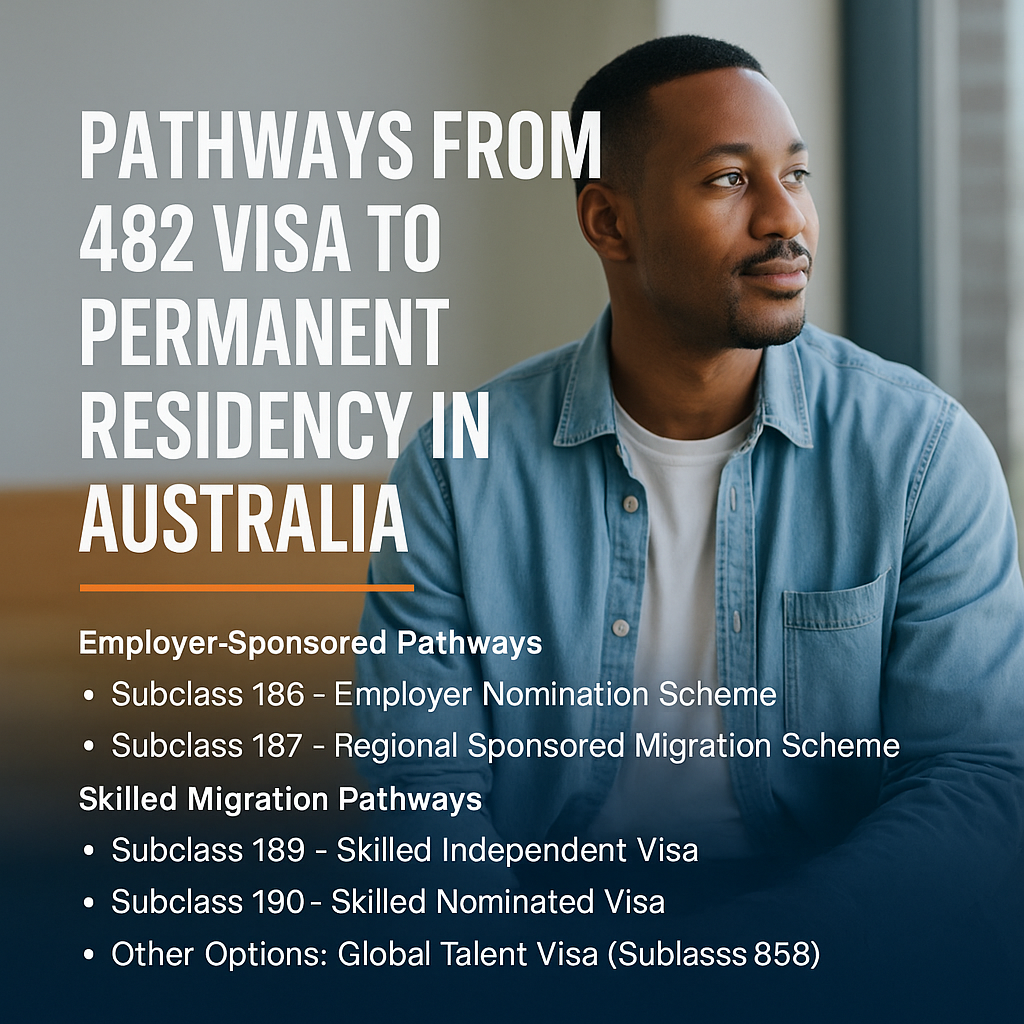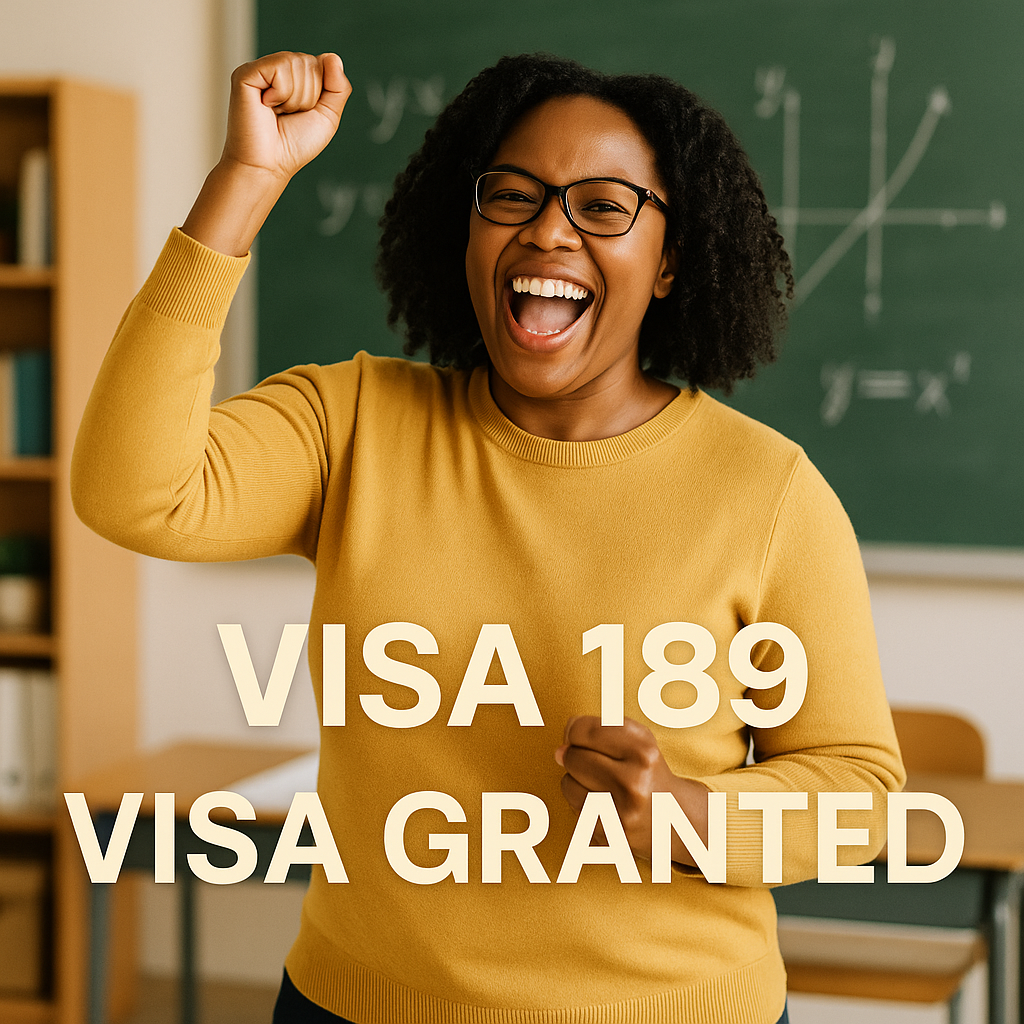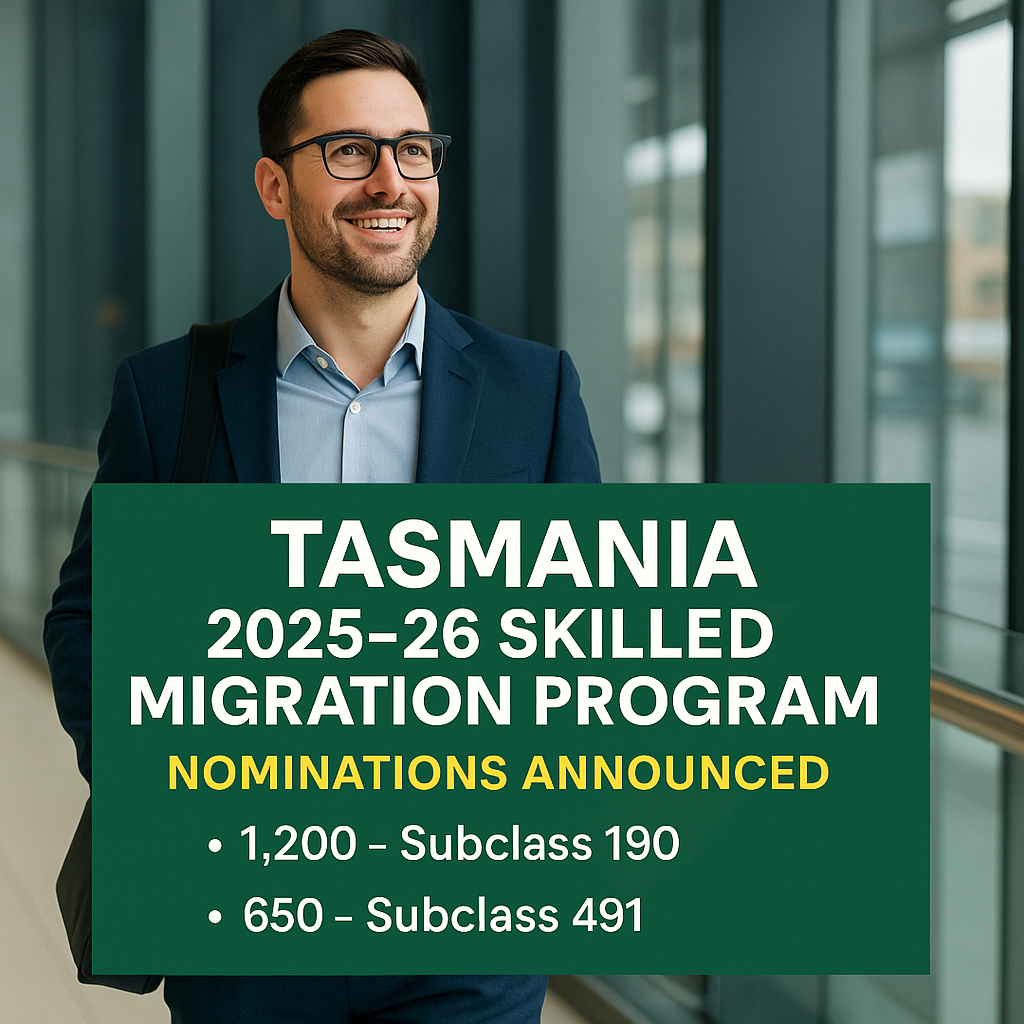1. Employer-Sponsored Pathways
Subclass 186 – Employer Nomination Scheme (ENS)
The Temporary Residence Transition (TRT) stream is the most common route for 482 visa holders.
-
Requirements:
-
Work for the same sponsoring employer in the same occupation for at least 2–3 years (time requirement depends on your grant date).
-
Employer must be willing to sponsor you for PR.
-
Your occupation must be on the Medium and Long-Term Strategic Skills List (MLTSSL).
-
-
Advantage: Direct pathway to PR without needing points testing.
Subclass 187 – Regional Sponsored Migration Scheme (RSMS)
If you’re employed in a regional area, this may be available.
-
Requirements:
-
Work for the sponsoring employer in regional Australia for about 3 years.
-
Employer nomination is required.
-
-
Advantage: Regional visas are often prioritized, and occupation lists can be broader.
2. Skilled Migration Pathways (Points-Based)
If you prefer not to rely on an employer, points-tested visas may be an option.
Subclass 189 – Skilled Independent Visa
-
Requirements:
-
Lodge an Expression of Interest (EOI) through SkillSelect.
-
Meet the minimum points requirement (age, English, work experience, qualifications).
-
Occupation must be on the skilled occupation list.
-
-
Advantage: Full independence — no employer or state sponsorship required.
Subclass 190 – Skilled Nominated Visa
-
Requirements:
-
A state or territory nominates you.
-
Must commit to living and working in that state for a set period.
-
-
Advantage: Lower points requirement compared to 189, plus additional points for nomination.
Subclass 491 – Skilled Work Regional (Provisional)
-
Requirements:
-
Sponsored by a regional state/territory or an eligible family member living in regional Australia.
-
Commit to living and working in a regional area.
-
-
Advantage: Pathway to PR through Subclass 191 after 3 years.
3. Other PR Options
-
Global Talent Visa (Subclass 858): For highly skilled professionals in priority sectors.
-
Partner Visa: If you have an Australian citizen or PR partner.
Which Path is Right for You?
The best PR pathway depends on:
-
Your occupation and whether it’s on the MLTSSL.
-
Whether your employer is willing to sponsor you.
-
If you’re working in a regional area.
-
How many points you can claim for independent migration.
Final Thoughts
The 482 visa is often just a stepping stone to a more permanent future in Australia. Whether through employer sponsorship, skilled migration, or other visa categories, there are multiple routes to PR. Careful planning, assessing your eligibility, and sometimes seeking professional advice can make all the difference in achieving your migration goals.
At the end of the day, Permanent Residency opens the door to stability, security, and more opportunities in Australia — so it’s worth mapping your pathway early.



